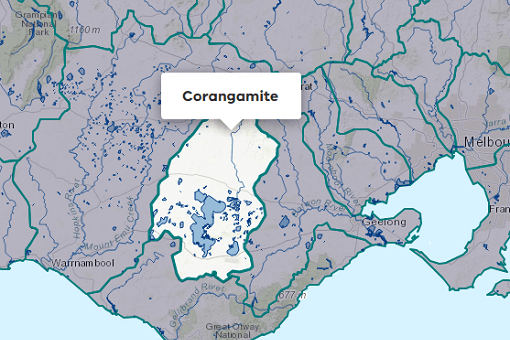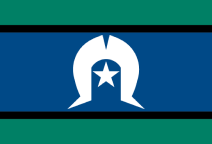About the area
- The Barwon River rises in the forested Otway Ranges and flows close to the townships of Forrest, Birregurra, Winchelsea and Inverleigh where it is joined by the Leigh River, before joining the Moorabool River and flowing through Geelong and the Lower Barwon Wetlands, joining the coast at Barwon Heads.
- Annual rainfall in the basin is between 600-1800 mm in the headwaters, reducing to 400-600 mm in the lower reaches.
More information on water management and accounting is detailed in Water .
2021-22 overview
Available water
Catchment inflow was higher than the previous year.
Licensed diversion restrictions
There were more restrictions on licensed diversions than the previous year.
Water use
A similar volume of water was diverted for consumptive purposes to the previous year.
When compared to the previous year, in 2021-22:
- less rainfall was received, although catchment inflow was higher
- levels in the major storages ended the year slightly lower
- there were more restrictions on licensed diversions from unregulated streams.
- a similar volume of water was diverted from the basin for consumptive uses.
Climate
Rainfall
In 2021-22, rainfall in the Barwon basin was close to average in most areas, lower than the previous year. Rainfall was:
- average throughout most of the basin from north to south
- above average over the Bellarine Peninsula east of Geelong and in the far south in the Otway Forest Park.
River basin water balance
In 2021-22, 48,597 ML of water was diverted for consumptive uses: town, domestic and stock, irrigation and commercial supply. This is similar in magnitude to the 44,285 ML diverted in the previous year.
Water balance table
The table below shows the total volumes of water available and supplied from water resources in the Barwon basin in 2021-22.
Table 1: Water balance, Barwon basin
Storages
Major — greater than 1,000 ML — on-stream storages in the Barwon basin are included in the water balance. Volumes in off-stream storages are presented for additional information about the resource condition.
Storage levels
Major storage levels in the Barwon basin were 83% on 30 June 2022.
Lower than the previous year
Storage levels were 87% on 30 June 2021.
Table 2: Storage levels, Barwon basin
Catchment inflow
Catchment inflow represents the volume of water flowing into the waterways of a basin. It is calculated to be the difference between the total outflows, the known inflows and the net change in storage volume.
Below average inflow received
Catchment inflow was 77% of the long-term average of 248,000 ML.
More than the previous year
This is higher than the previous year (66% of the long-term average).
Wastewater treatment plants
Water treated at wastewater treatment plants can be used to supplement water available in the basin. Water discharged to waterways from treatment plants is included as an inflow to the water balance.
Information on treatment plants is now reported in the Water Supply local reports for the water corporation responsible for managing the plant.
In this basin, wastewater treatment plants are managed by Central Highlands and Barwon .
Small catchment dams
Water harvested, used and lost by small catchment dams (farm dams) is included in the water balance.
Table 3: Small catchment dams, Barwon basin
Entitlements and compliance
Entitlements provide the basis for how water is shared in the basin.
Entitlement volumes
Rights to water in the Barwon basin are shown in table 4 below.
Entitlement volumes represent a maximum volume that can be taken in a one-year period. The volume available in a particular year is dependent on the rules for allocating water set out in the entitlement and the seasonal conditions in that year, which varies. The rules for allocating water under an entitlement can differ between entitlements and systems. This affects the ability and likelihood of water being taken in a particular year.
Table 4: Annual entitlement volumes at 30 June, Barwon basin
Available water and take under entitlements
Total water available under entitlements represents the volume of water that was available to be taken by entitlement holders in 2021-22. The volume includes carryover from the previous year, seasonal allocations and net trade into the basin.
Water taken
There was 44,819 ML used in 2021-22, more than the year before (40,268 ML).
Restrictions on licensed diversions from unregulated streams
- A Stage 2 roster was in place in Zone A of the Barwon River from April 2022 through to the end of June 2022; this is one greater than in the previous year where there were no restrictions.
- All other streams were unrestricted for the year.
Available water and take table
This table shows the volume of available water and the volume taken under entitlements in 2021-22.
More information on available water and take has been detailed in the How do we account for surface section on the How do we account for water page.
In 2021-22, more water was taken under entitlements than the previous year.
Table 5: Available water and take, Barwon basin
Compliance
Compliance against water entitlements is reported for this basin in three areas:
- entitlement issued: the volume of entitlements issued in a basin does not exceed formal caps, and has not increased without appropriate approvals
- water taken: the volume of water taken during the year does not exceed the volume considered to be available for consumptive and/or in-stream use during that year
- bulk entitlement provisions: holders of entitlements do not breach any provisions that are documented in their bulk entitlement orders.
Total entitlement volume
There was no net increase in the total entitlement volume from the previous year.
Total volume diverted
The total volume diverted (44,819 ML) was within the volume available for the year (71,946 ML).
Individual bulk entitlements
No individual bulk entitlement holder took more than the annual volume made available to them.
Exceptions to compliance
Individual bulk entitlement holders complied with all provisions in their entitlements.
Water for the environment
Environmental watering sites
Environmental watering sites and environmental values in the Barwon basin that depend on water for the environment include:
- the Bellarine Peninsula’s internationally significant wetlands, which are listed under the Ramsar Convention and which rely on freshwater inputs from the Barwon basin to function ecologically
- the Lake Connewarre complex
- native fish populations (such as Australian grayling, Yarra pygmy perch, Australian mudfish and tupong)
- the native waterbird population (particularly migratory shorebirds including the common greenshank, Pacific golden plover, curlew sandpiper and red-necked stint)
- platypus populations in the upper and middle catchment.
Environmental water reserve
In 2021-22, water for the environment in the Barwon basin comprised:
- the Barwon River Environmental Entitlement 2011
- the Upper Barwon River Environmental Entitlement 2018, comprising 3.8% of inflows to West Barwon Reservoir held by the VEWH
- water from the Ballarat South Wastewater Treatment Plant released into the Leigh and Barwon rivers
- a portion of the treated groundwater discharged from the Fyansford quarry to the lower Moorabool River
- water set aside for the environment through the operation of passing flow conditions:
- on consumptive bulk entitlements held by Barwon Water and Central Highlands Water
- on licensed diversions
- all other water in the basin not allocated for consumptive uses: this water also provides social, recreational and cultural benefits.
Environmental water use
In 2021-22, a total of 849 ML of environmental water was delivered in-stream in the Barwon basin.
Management responsibilities
Management of water in the Barwon basin is undertaken by various parties
| Authority | Management responsibilities |
|---|---|
| Southern Rural Water |
|
| Barwon Water |
|
| Central Highlands Water |
|
| Corangamite Catchment Management Authority |
|
| Water supply system | 2021-22 (ML) | 2020-21 (ML) |
|---|---|---|
| Geelong/Bellarine | 32,396 | 28,460 |
| Greater Ballarat system | 8,933 | 8,272 |






